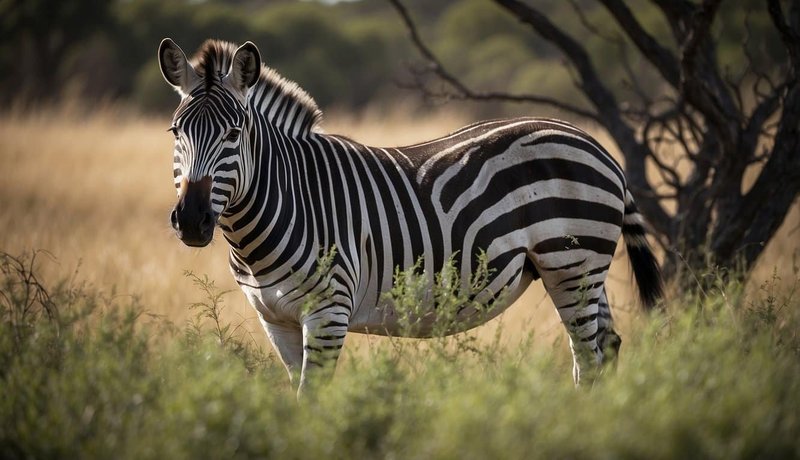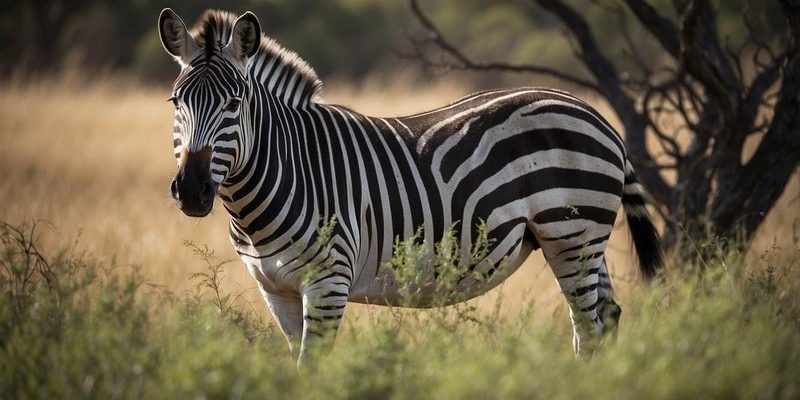
Just like you might chat with friends at a cafe about what to eat and where to go, zebras also make choices about food that keep them healthy and safe. Understanding the zebras’ diet and hunting strategies reveals a lot about how they thrive in their environment. So, let’s dive into their world and learn how these striped creatures manage their meals and evade danger.
Understanding the Zebra’s Diet
Zebras are herbivores, which means their diets consist entirely of plants. More specifically, they mainly eat grasses. Imagine a buffet filled with all sorts of greens, and zebras are the diligent diners, sampling different types of grass as they graze along the plains. In fact, they’re quite selective about what they munch on. They tend to favor younger, softer grasses, which are easier to chew and more nutritious.
One interesting aspect of their diet is that zebras can adapt to changing environments. During droughts or in areas where food is scarce, they may switch to eating tougher grasses, leaves, and even bark. This flexibility in their diet allows them to survive in various habitats. Here’s the thing: being a picky eater can sometimes be a good thing! It helps zebras maintain their health and energy levels.
Zebras also need to drink water regularly. While they can go for a few days without it, they often seek out water holes, especially in the hotter months. This necessity drives them to areas where they can find both food and water, which can sometimes lead them into conflict with predators. So, their diet is not just about what they eat—it’s also about where they choose to eat.
The Grazing Habits of Zebras
Now that we know what zebras eat, let’s talk about how they eat. Zebras are browsers, meaning they predominantly graze, using their tough and flexible lips to grasp grass blades. They often feed in the early morning and late afternoon when temperatures are cooler. This timing helps them conserve energy and avoid the heat of the day.
While grazing, zebras often form tight social groups. Think of it as a family dinner—everybody’s sitting together, sharing food and keeping an eye out for danger. This social behavior is part of their survival strategy. By sticking together, they can watch each other’s backs and alert one another to the presence of predators.
Interestingly, zebras also communicate about food sources. When one zebra finds a tasty patch of grass, it may call over its friends to join in. This communal aspect of feeding not only enhances their chances of finding food but also strengthens the bonds within their herd. It’s a bit like sharing a good restaurant tip with friends!
Predator Awareness and Evading Danger
One of the most vital aspects of zebras’ lives is their constant need to be aware of predators. Lions, hyenas, and wild dogs are just a few of the threats they face. Here’s the thing: while zebras might look calm and carefree, they’re always on alert. Their wide-set eyes allow them to see a good portion of their surroundings, which helps them detect potential threats quickly.
Zebras also have a couple of clever tricks up their sleeves to avoid becoming lunch. They often rely on their speed and the ability to zigzag when fleeing. Imagine trying to catch a moving target that’s constantly changing its direction—that’s how tough zebras make it for predators!
Another fascinating strategy is the use of their stripes. Some researchers believe that the black and white striped pattern confuses predators, making it harder for them to focus on a single zebra in a herd. This optical illusion can provide zebras with precious extra moments to escape. They also tend to stay in groups, which not only provides safety in numbers but also makes them look larger and more intimidating to potential threats.
Social Structures and Safety in Numbers
Zebra herds are more than just a group of friends hanging out together; they’re vital to their survival. Typically, a herd consists of several females and their young, led by a dominant male. This male zebra often takes charge in protecting the group. If danger arises, he takes the lead in alerting the herd and guiding their escape.
This social structure is crucial for a zebra’s continued survival. When they move in a group, they can better defend themselves against predators. Furthermore, it allows for more eyes on the lookout for danger. It’s like having a support system where everyone pitches in to keep an eye on each other.
You might be wondering how zebras interact within their social groups. They communicate using body language, vocalizations, and even facial expressions. For example, when one zebra raises its head and looks alert, others quickly follow suit. This form of communication ensures that everyone knows when it’s time to be cautious or when it’s safe to graze.
Feeding Competition and Adaptability
In the wild, competition for food can be fierce, and zebras are not immune to it. They often have to compete with other herbivores like wildebeests and gazelles for the best grazing spots. This competition drives zebras to adapt their feeding behaviors. They may change their foraging patterns or move to less-congested areas to ensure they get enough to eat.
Interestingly, zebras also exhibit a behavior known as “mixed-species grazing.” This means they may graze alongside other herbivores. By doing this, zebras can benefit from the increased awareness these animals bring. Different species often have different reactions to predators, so having a mix can enhance safety for all.
Additionally, zebras have developed strategies for when food is scarce. They can switch to grazing on tougher plants, which other animals might avoid. This adaptability helps them survive during droughts or when their preferred grasses are overgrazed. It’s like having a backup plan in case the main course isn’t available!
In summary, zebras have evolved a fascinating combination of dietary habits and hunting strategies that ensure their survival in the wild. Their selective grazing, social structures, and adaptability to competing with other wildlife create a well-rounded approach to life on the savannah. While they may seem like simple grazers, zebras are incredibly resourceful and intelligent.
These striped creatures exemplify the balance between thriving in their environment and avoiding the dangers it presents. Whether they’re munching on fresh grass or racing away from a hungry lion, zebras remind us of the importance of community, adaptability, and instinct in the dance of survival. So the next time you see a zebra, remember they’re not just pretty faces—they’re incredible survivors with a story to tell!

